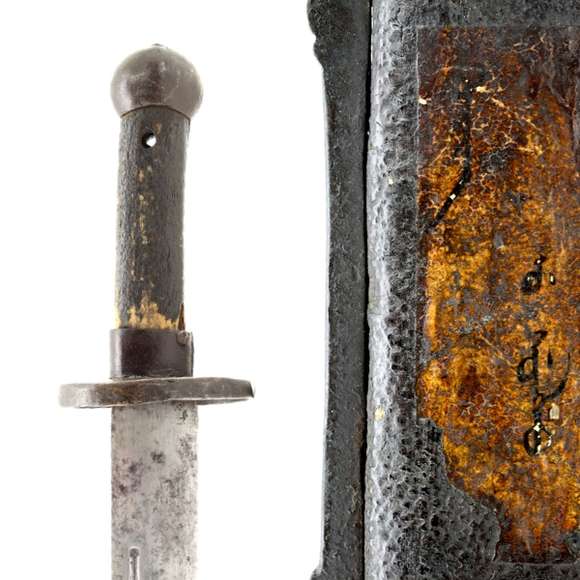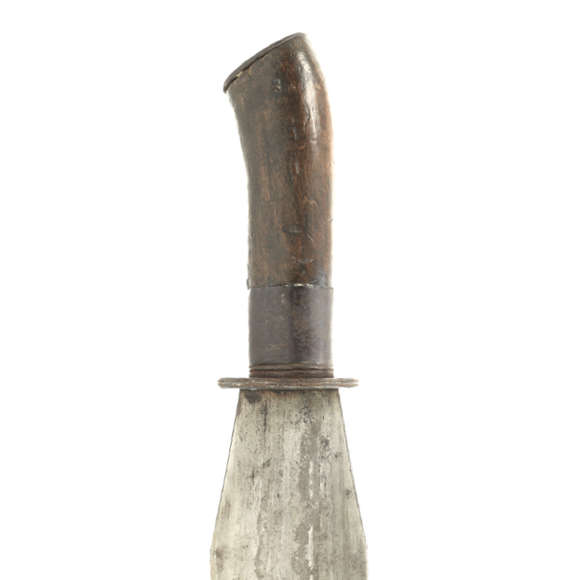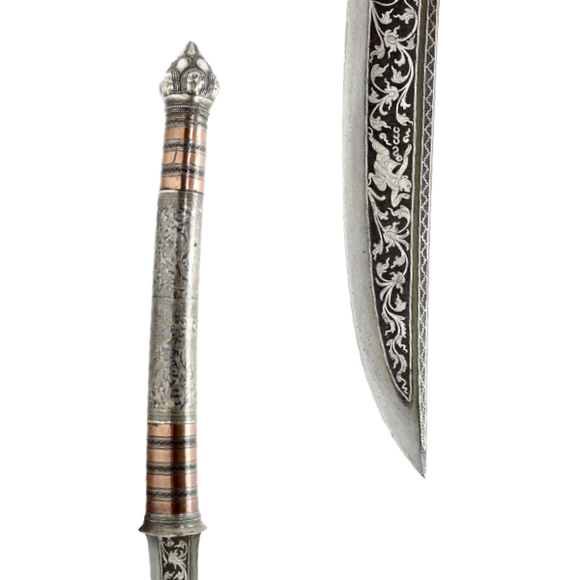Language: Mandarin Chinese
Source: Classical literature
Description
Literally, dāndāo (單刀) means "single saber". It referred to different types of sabers over the course of time. It is not strictly any one type of dāo (刀), rather, it refers to any type of dāo used solely without a shield or left-hand weapon.
As such, we never see it appear in texts regarding military supply or organization because, at any point in time, several types of dāo could be used as a dāndāo. The term thus only appears in martial arts manuals that describe the actual use of weapons.
Ming use
The term seems to first appear in Ming manuals, where it was exclusively used for long sabers or chángdāo (長刀).
During this period sabers were normally either used in pairs or in combination with a shield. The then newly introduced long saber was modeled after the Japanese nodachi used by pirates raiding the coasts of China. It was so large that it required both hands to wield it, thus leaving out the possibility to use anything else with it. Hence, the name that could be translated as "solely the saber" was used.1
The Ming produced various writings about the long saber, including Cheng Zongyou's Dan Dao Fa Xuan (單刀法選). Jack Chen wrote an excellent translation Ancient Art of Chinese Long Saber.
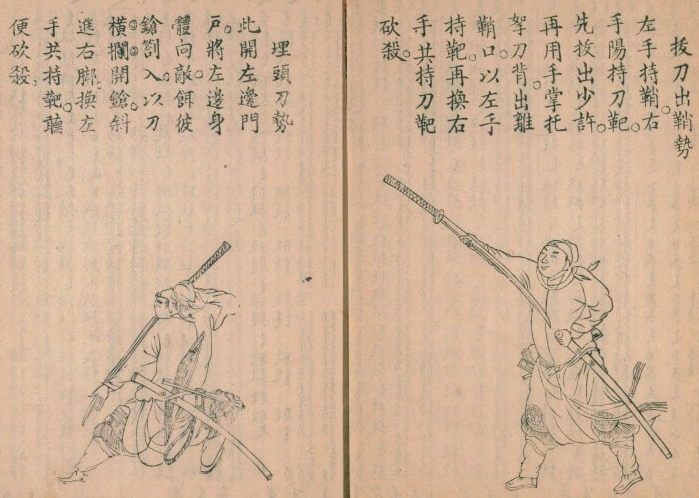
Pages of the Dan Dao Fa Xuan by Cheng Zongyou.
Qing use
In Naer Jing-e's 1843 Illustrated manual for the mastery of military techniques, written for the Green Standard Army of Zhili province, the dandao used here is clearly a single handed Chinese saber of the liuyedao type.2
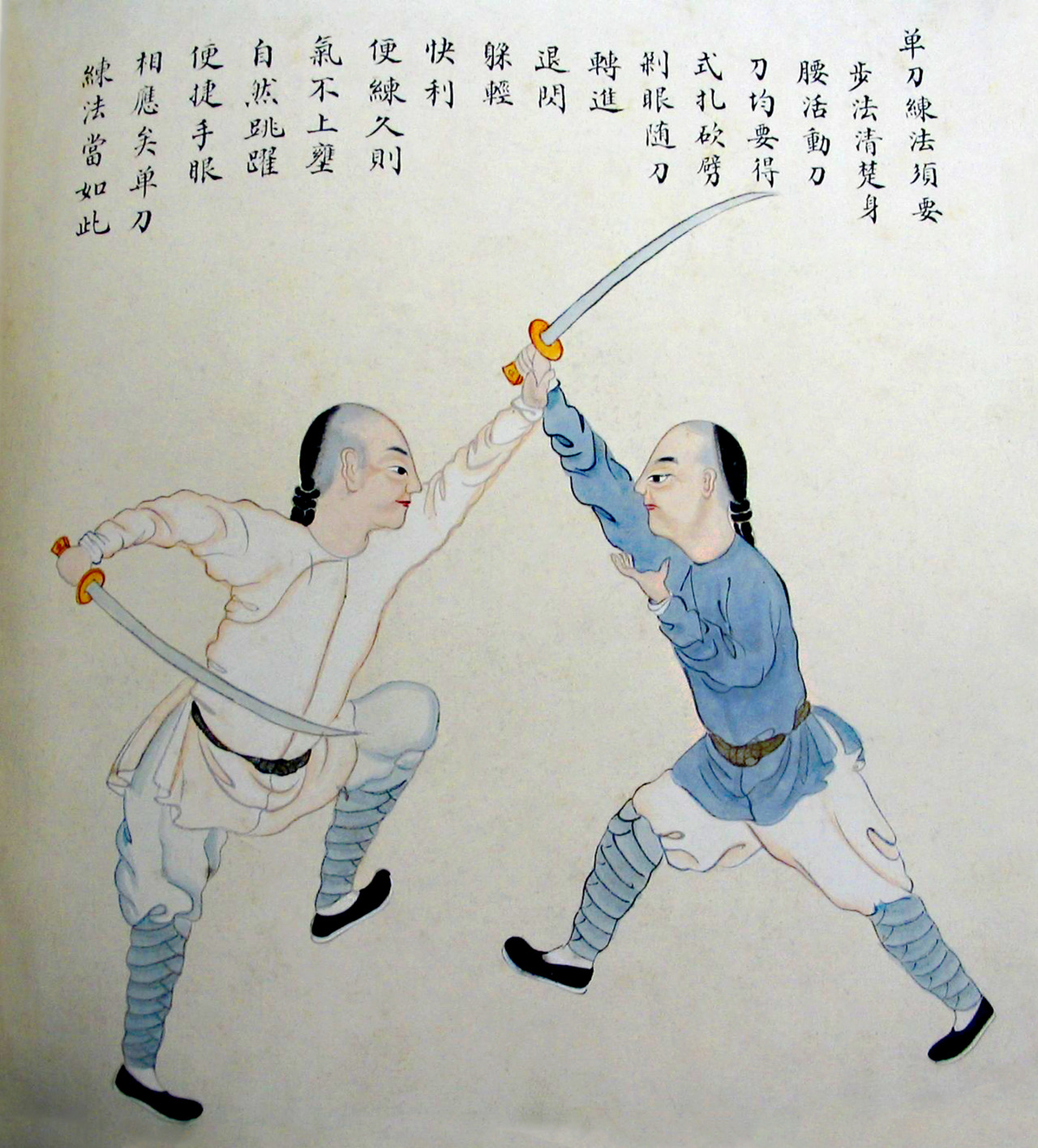
A page from Naer Jing-e's manual
Republican period use
The book Single Defense Saber (單戒刀) by Jin Yiming (金一明), published in 1932, discusses a number of Chinese sabers in use.3 Among others are listed two items that can be used as dāndāo:
Mǎdāo (馬刀), described as: "double-hand-wielded large dāndāo" (雙手舞之大單刀)
Yāodāo (腰刀), described as: "back-carried dāndāo" (厚背的單刀)
The shuāngdāo entry in the same work confirms that the term dāndāo disappears as soon as it's not the sole item wielded:
Shuāngdāo (雙刀), described as: "left and right hand wielded double sabers" (左右手同舞之雙刀)
Notes
1. Jack Chen did an excellent translation of Cheng Zongyou's Dan Dao Fa Xuan (單刀法選), available at Ancient Art of Chinese Long Saber.
2. Naer Jing-e's 1843 Illustrated manual for the mastery of military techniques was auctioned in 2014
3. See: Single Defense Saber (單戒刀) by Jin Yiming (金一明). Published by, New Asia Press (新亞書店印行) Oct, 1932. An illustrated translation by Paul Brennan is available here.)



